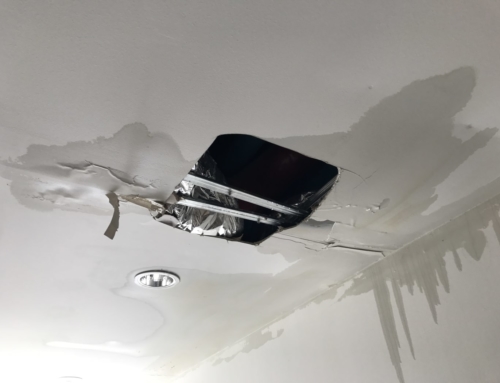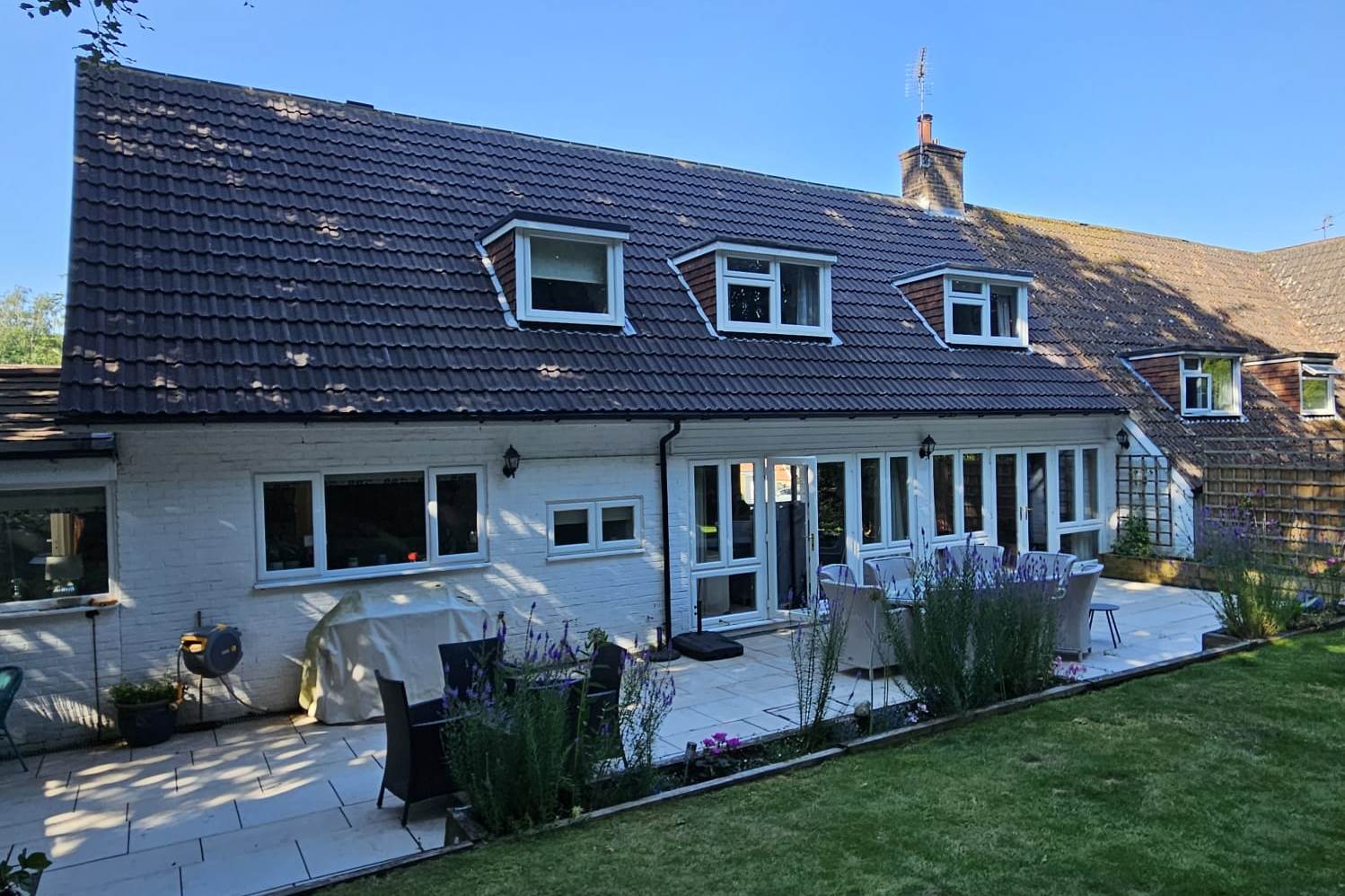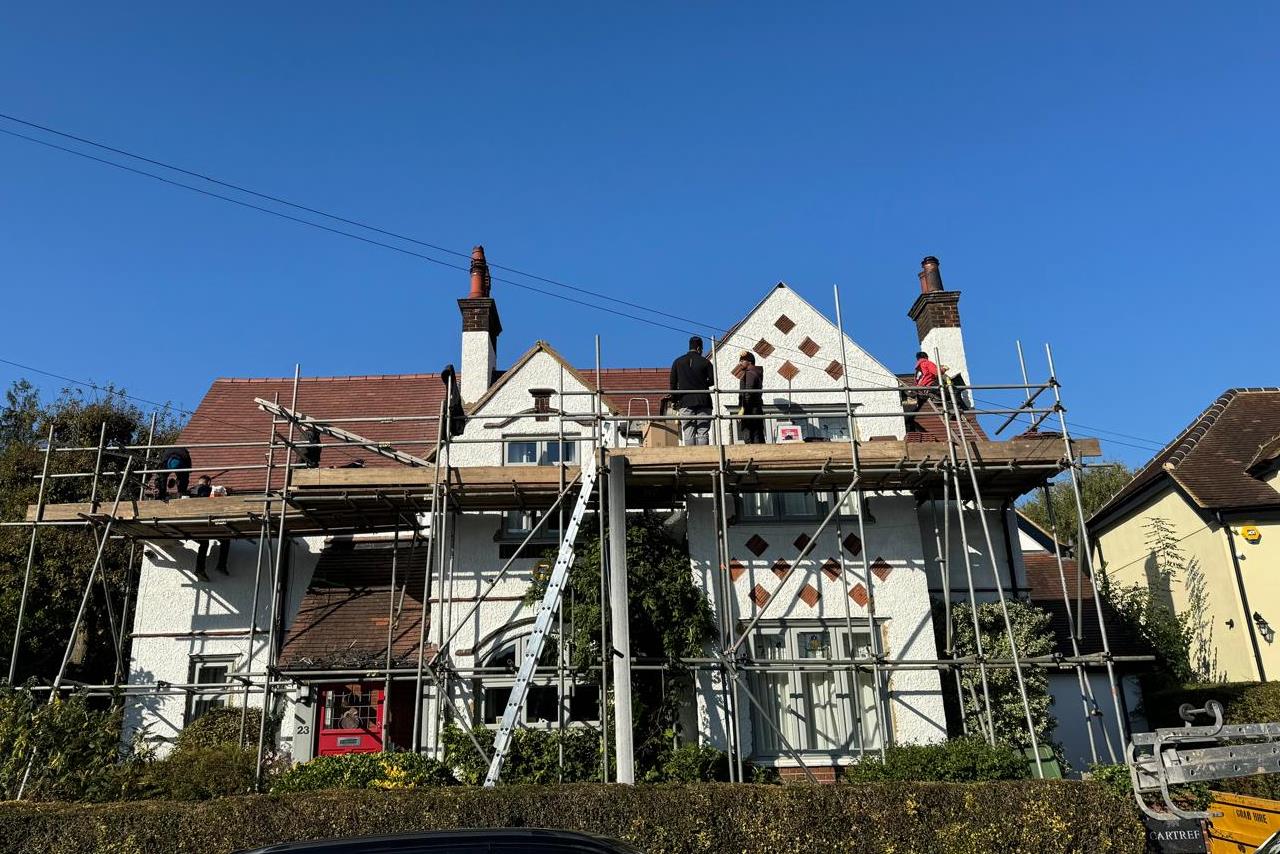
When considering roofing upgrades, an option to consider is a flat to pitched roof conversion. This can be chosen for both aesthetical and functional reasons, offering numerous benefits to areas like porches and garages while adding another visual element to your home’s roofing.
Here’s everything you need to know about flat to pitched roofs.
Why choose a flat to pitched roof conversion?
While modern flat roofs offer sleek aesthetics and functional spaces, there are lots of reasons to consider a flat to pitched roof conversion. This includes the enhanced aesthetical appeal you gain from visible roofing architecture.
Pitched roofs have a timeless and classic appearance, whatever your property style. The dynamic angles and slopes of pitched roofs add character, depth and dimension to a building, creating a more visually interesting façade, especially if you match the tiles to the existing roof.
Those with old flat roofing may also benefit from the increased incline gained from this type of roof conversion, reducing water pooling issues and leaks. Flat to pitched roofs can also create additional insulation capacity, improving the energy efficiency of the space.
Is it easy to change a flat roof to pitched?
Converting a flat roof to a pitched one is a transformative process that requires careful planning, professional expertise and structural considerations. While the complexity of the conversion will vary based on factors like the existing structure and desired pitched roof design, the process generally involves some key steps.
Firstly, before embarking on a flat to pitched roof conversion, a thorough structural assessment is essential to evaluate the existing framework. This ensures it can support the additional weight and changes associated with a pitched roof. The survey will determine the feasibility of the conversion while identifying any necessary modifications to the underlying structure.
During the flat to pitched roofing conversion, the existing flat roof is sometimes removed, or the new structure is added to the existing one if there are no current issues. The pitched roof is built by installing trusses and rafters to form the supporting framework before the new roofing materials are applied.
Do you need planning permission to change a flat roof to pitched roofing?
Whether you need planning permission for flat to pitched roof conversions comes down to the project requirements. In many straightforward cases, minor alterations to a roof may fall under permitted development rights, allowing homeowners to proceed without obtaining full planning permission.
However, there are always exceptions to the rule, as many local authorities have regulations regarding alterations to the external appearance of a property (such as those in conservation areas), including changes to roofs. Consult with your local planning department to determine the specific requirements and restrictions applicable to the proposed conversion, especially if it involves altering the highest part of your existing roof.
You may also wish to hire a roofing contractor with experience in this type of project, as they can advise you about the work required and how that may impact your need for planning permission.
Looking for an expert roofer? Contact Radlett Roofing
Are you considering converting a flat roof to a pitched roof? Radlett Roofing offers expert roofing services across Hertfordshire, including Harpenden and Hemel Hempstead.
For a free roof conversion quote, contact us on 01923 961055 or email info@radlett-roofing.co.uk.








